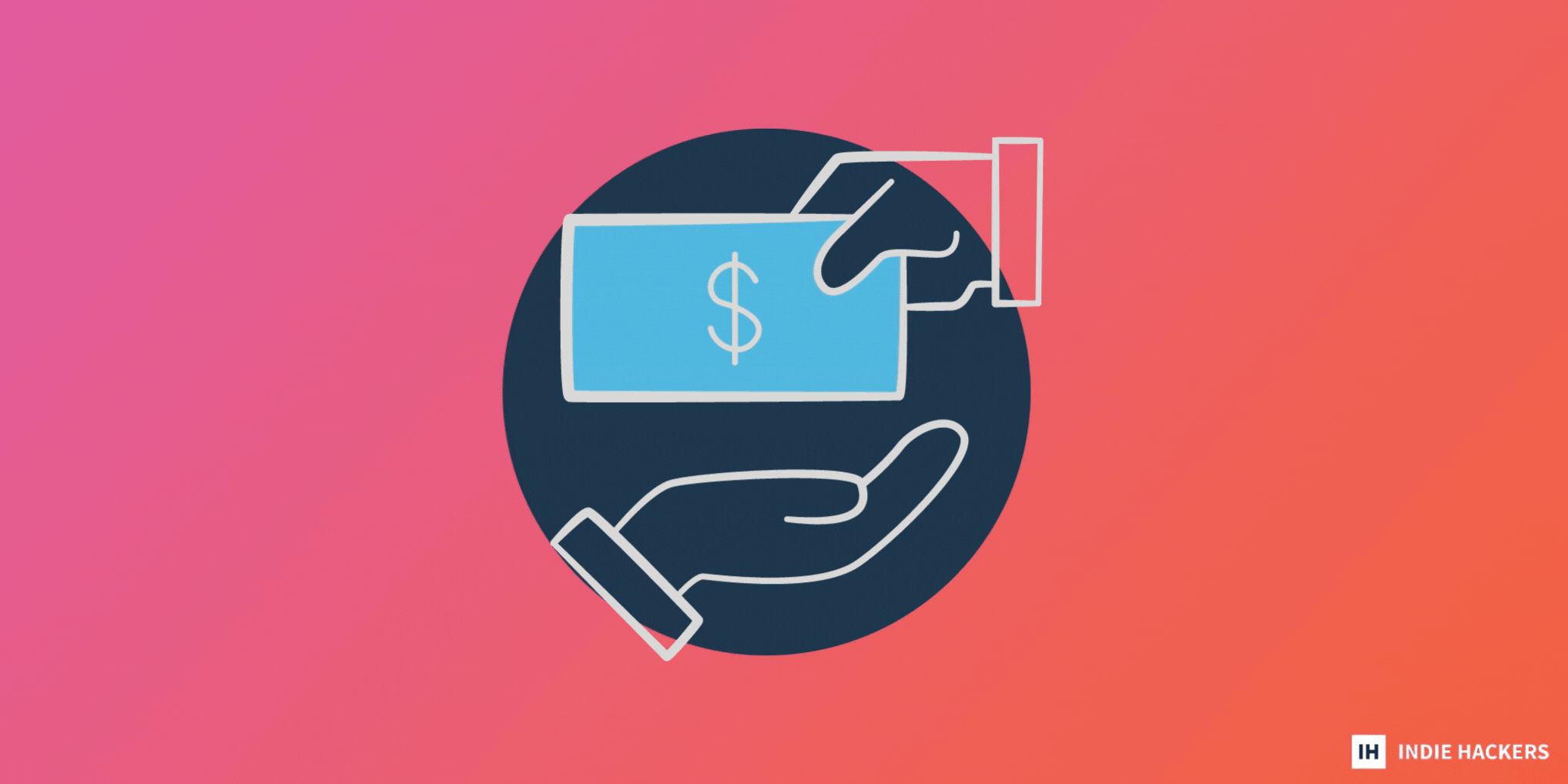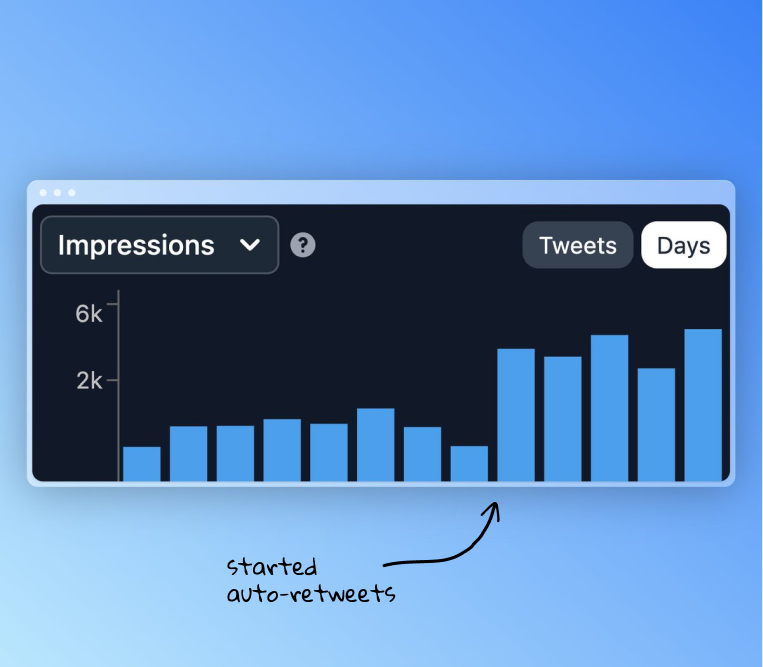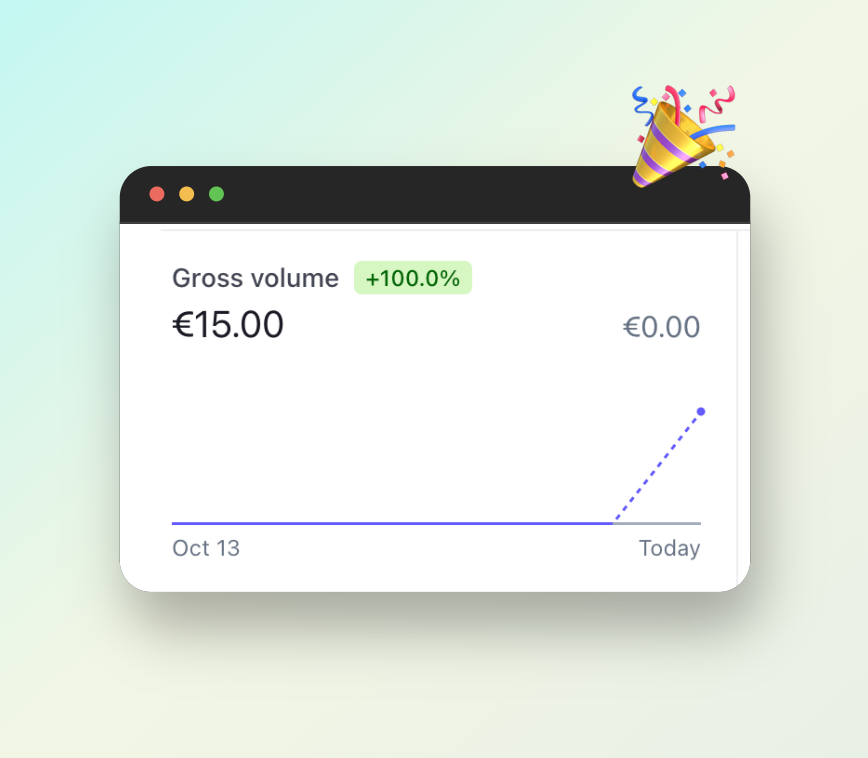How do freelancers get paid? - **From the basics of an invoice, to best invoicing tools, to what to do** if your client doesn't pay, here's what founders need to know about how to invoice and actually get paid! - **Going all-in on a startup can be ex
How do freelancers get paid?
-
From the basics of an invoice, to best invoicing tools, to what to do if your client doesn't pay, here's what founders need to know about how to invoice and actually get paid!
-
Going all-in on a startup can be expensive, but these lessons can save you time and money. Hint: Differentiate technical risk from execution risk.
-
Founder Lilian just landed his first paid customer for Sidebird, his Twitter growth tool. Below, he shares how he pushed through self-sabotage and a false start, and his next goal for the business.
Want to share something with over 100,000 indie hackers? Submit a section for us to include in a future newsletter. —Channing
🧾 How to Invoice as a Freelancer

by James Fleischmann
Last week, we talked about how freelancing can ease the transition from full-time employment to full-time indie hacking. But what about the payment process?
Here's how to invoice and get paid!
Show me the money
A simple PDF export from a Google Doc template is likely a sufficient invoice for the vast majority of indie hackers. Keep in mind that this won't work well at scale, so if you have lots of clients or teammates, you may need something a bit more sophisticated.
The basics of an invoice:
- Your business contact information.
- Client's business name.
- Invoice number.
- Issue date.
- Due date.
- Accepted payment method(s).
- Brief description of services rendered: For example, "software development."
- Itemized list of tasks completed: You can skip this unless your client specifically asks for it. Some clients want it, others don't.
- Price: If it's a time and materials (T&M) contract, include hours and rate. If it's a fixed bid, just include the agreed upon price. If it's a retainer, include the predetermined amount.
- Costs: If you incurred any additional costs while rendering services on a T&M contract, itemize those. It's a good idea to attach receipts, too.
- Total due: The price plus the costs incurred.
- Personalized note: This is not necessary, but it helps to build a relationship.
There are ton of templates out there, and free invoice generators to help you along!
Sending the invoice
When you send the invoice, write a personalized message in the email body. In the subject line, include the invoice number and due date. Mark a certain date in your calendar to follow up by if you haven't received payment. When an invoice is paid, mark it as such to easily keep track of payments.
Top invoicing tools:
Freelance marketplaces also handle this stuff if you choose to find clients through them. Here's a post with a ton of marketplace options.
Make sure that payments go into your business bank account. Immediately set aside 30% for taxes. It's always nice to send your client a thank you note, along with confirmation of receipt.
What if they don't pay?
If someone is disputing an invoice, talk to them. Be friendly, and have an open mind. Most disputes can be resolved in a way that makes both parties happy. Jump on a call. Have an earnest conversation. Try to come to an agreement.
Don't be a pushover, but don't be unreasonable. Refer to the contract as much as possible, and base your decisions on that. If you don't have a contract, the confusion probably comes from your oversight. In this case, you may need to give in, unless you have some other written documentation that help make your case.
Avoiding late payments
The best way to get paid on time is to be proactive about it:
- Upfront payments: Get clients to pay upfront. Retainers are beautiful things.
- Take a downpayment: If you're doing a fixed bid, this is a great way to make sure that they're good for the money upfront.
- Be very clear about the payment terms and due dates: Be sure to confirm that they understand everything, including what happens if they don't pay.
- Have a signed contract.
- Make paying easy: Reduce friction by offering multiple easy payment methods.
- Build a friendly relationship: Stiffing a friend is hard to do.
- Invoice frequently and regularly: This is one of your best ways to reduce risk.
- Stop working with people who don't pay: They aren't valuing or respecting your work, and it's not worth the hassle and stress.
- Trade credit insurance: You can get insurance that protects you from nonpayment.
What to do if a payment is late
Hopefully, the tips above will prevent this. If not:
- Follow up: Casually check in about it. I'd recommend doing it a day or two after the due date.
- Warning: If they have not put things in motion for payment about five days after the due date, give them a warning. This should be a little more firm, but still personable and professional. Ask them to help you better understand the delay; it might be an easily resolved issue of miscommunication, a forgetful accountant, or something like that. Remind them of your late payment policy.
- Offer a payment plan: One possible solution is a payment plan, particularly if they are having a cash flow issue. If you go this route, make sure they put something down right then as a show of good faith.
- Get on a video call: Emails can be impersonal.
- Resolve any issues: It's possible that they aren't paying because they aren't happy with your work. Fix these issues, as long as they are reasonable and within scope. If not, push back.
- Begin charging late fees: If you've stipulated it in your contract, begin charging late fees at the specified date (maybe 2-4 weeks after the due date). From what I can find, 1.5% is pretty standard, but up to 5% is also reasonable. The higher end is closer to 8%.
- Stop delivery: At this point, you can keep working, but stop delivery of the code, design assets, etc. Instead, deliver builds, static images, etc. This way, they can see that you're still providing value, but you're maintaining your power. If they want the asset, they need to pay. Simple as that.
- Stop working: If they haven't paid within 3-4 weeks, stop working until they resolve the issue. Do not deliver your most recent work.
- Send a debt collection letter: If they still aren't paying, send a letter outlining the debt and stating that you plan to collect if it isn't paid by a designated date, maybe another two weeks.
- Send a final notice: If they don't pay by the date stipulated in your debt collection letter, give them a final notice. Let them know that you are initiating next steps, tell them exactly what those are, and tell them that they can put a stop to it by paying immediately.
Keep referring back to the contract. This is your single point of truth, and you should lean on it. This is why you have a contract in the first place.
If they still don't pay, you'll have to decide whether you actually want to escalate the situation. There are a few options here:
- Lawyer up.
- Small claims court: In the US, you can bring people to small claims court without a lawyer. This is a cheaper option, but it's a lot of work with no guarantees. Make sure it's worth your time.
- Invoice factoring service: This is a service that will pay you the outstanding amount minus their cut, then they'll take what they collect. Their cut can be pretty huge. This is for outstanding invoices that are no more than 30 days late.
- Debt collection agency: This one is for invoices that are over 30 days late. Again, they'll take a big cut.
- Walk away: Sometimes, it's best to just walk away. Weigh how much it is worth to you, and make your decision.
- Fix your processes: Do a post-mortem to understand where things went wrong. What can you do better? What terms or processes can reduce your risk? (Hint: Get upfront payments.)
What are your tips on successfully invoicing? Share in the comments!
Discuss this story.
📰 In the News

from the Volv newsletter by Priyanka Vazirani
🎵 Instagram will now allow you to add music to still image posts.
🏋️♂️ Gyms are now outpacing other retail categories.
💸 FTX owes money to over a million people.
📱 Mobile game revenue is set to decline for the first time in history.
🌎 Inside the population explosion, and how it will reshape society.
Check out Volv for more 9-second news digests.
👨🏫 10 Startup Lessons for Founders

by Carl J. Gustafson
I lost $209K+ of my own money trying to start a business. My wife and I started a marketplace for last minute tours and activities. Think of it as Hotel Tonight x OpenTable x ClassPass. The idea was to bring live connectivity to an industry where 80% of bookings were still done using pen and paper.
We worked on it for three years while holding down full-time jobs. The initial revenue came from wedding gifts, and the rest came from our household fund and paychecks. We moved out of a fancy high-rise and into my parents basement.
Here are our lessons learned about launching a business. Hopefully, they can help other founders!
1. Differentiate technical risk from execution risk
There's a reason everyone has a clever idea for a marketplace: They don't require you to actually build a standalone, unique product. Also, the technical barriers for entry are lower than high tech.
It seems more simple to play middleman, connecting supply and demand more efficiently. However, it's a long road to aggregate both sides and drive network effects. There are massive execution risks, plus you have to solve for two sides, not just one.
2. Don't be totally dependent on someone else's data
Partnering with store management systems made it easier to hack the supply side, but dictated our development efforts and unit economics. We had massive platform risk. If any of our partners had cut us off, we would have been screwed.
3. You don't need to build everything at once
Building a website, Android app, and iOS app before proving product-market fit was like burning money. It took us over a year to get to market, sell something, and get real feedback.
You should start small and master one platform, especially if you are paying someone else to do the coding.
4. Don't make everything reliant on code if you can't code
Countless times, I felt absolutely helpless. I knew what needed to be done, but I wasn't able to jump in and fix it myself.
I'll never depend on a third-party developer as the main source of production again. We would have been better off finding a technical cofounder than outsourcing flexibility and control.
5. No one is going to invest in your business if...
...you aren't willing to commit to it fully. If you aren't committed enough to take the plunge, why should they be?
6. Adding more features is an expensive distraction
If it isn't improving your core product, don't spend time on it, especially if you haven't found product-market fit.
7. You can be either low frequency or low price
As a marketplace, you can't be both. Our average purchase was $60 per ticket at three tickets. So, $180.
However, most people go on vacation infrequently, so they'd have to remember us again each time. We were in a dead zone.
8. Constraints drive focus
We tried to launch tours in 20+ states, but quickly found that we didn't have the time or budget to market everywhere at once. Additionally, each market was different on the ground.
We niched down multiple times:
USA --> Southern USA --> Florida --> Southwest Florida --> Tampa.
Nail it at the hyperlocal level, then build a playbook.
9. A founder's top job is sales
I hated cold calling. I hated walking into a scuba shop and nervously asking for the owner. I hated getting rejected.
But I couldn't hide behind a screen and work on strategy. I had to sell.
10. Killing your business is really hard
It took us longer than it should have to call it quits. Even now, it physically pains me to use the word "quit."
Does losing $200K hurt? Absolutely. But I look at it as my real world MBA. Check out my newsletter, which covers business metrics and concepts!
What are your top lessons from your founder's journey? Share below!
Discuss this story.
🚀 The Spector Report

by Josh Spector
I'm sharing growth tips for creative founders! Here's this week's:
If your traffic and views aren't generating connections, they don’t matter.
A video that gets 100K views, but only leads to 100 new subscribers, isn’t a “hit.”
It’s 99.9K missed opportunities.
Subscribe to Josh's For The Interested newsletter or I Want To Know podcast for more.
🥇 Lilian Landed His First Paying Customer

by Lilian
Hi, indie hackers! I'm Lilian, founder of Sidebird, a Twitter growth tool. It took four months, but I just got my first paying customer!
If I could start all over again, there are a lot of things that I would do differently. I went through self-sabotage, a false start, and almost quitting.
Here's the full story!
The idea
I began my journey as a solo founder back in July 2022, after spending six months building in the Web3 world. I'd had enough of the market going up and down, and wanted to start building something.
I was inspired by indie devs sharing their journey on Twitter, so I decided to jump in. I didn't know anything about Twitter, so I bought some courses, including Arvid Kahl's Find your Following, and started tweeting from my account.
One of the (many) tips in Arvid's course was:
I retweet my own content 6-12 hours after it's posted. That way, I reach stragglers and Twitter friends in other timezones.
I gave it a try, and realized how powerful it was!

Here's the thing: No one wants to wake up at 3 AM to retweet, so I searched for a tool to automate the process. When I couldn't find a tool for less than $200 a year, I knew that I was onto something.
The false start
I started building for myself, so I was sure to have at least one happy user! All the tool did was retweet 12 hours after a specified tweet was posted.
As I posted about the product on Twitter, friends asked me to share it. I shared it as it was: Buggy AF, almost no features, and 100% free.
I was surprised to see that people liked it anyway! I received a lot of feedback and ideas for it. Two months and 100+ users later, we exceeded the Twitter API monthly usage:

Self-sabotage
I took that as an opportunity to establish an action plan:
- Make it paid to reduce the number of users, along with requesting elevated API access.
- Add a custom sequence feature to let people choose when to retweet.
- Add a "clean feed" option to delete all retweets 24 hours after posting.
I gave myself 10 days to release these things, and it was very stressful. Once I released them, I didn't have time to test them as I should have.
It was so buggy that, after two days, people weren't even able to log in. I was completely down. I was getting tons of DMs from people reporting bugs, and every time I tried to fix one in production, I created two new ones. I started doubting myself, and I almost gave up.
The last chance
After two weeks of moping, I somehow found the courage to dive back into the code. I completely changed the way authentication is handled, and managed to make it work!
Two days later, I received a Stripe notification:

Currently, I have 30+ people signed up for a 14 day free trial, and I keep improving Sidebird!
Landing that paid customer means a lot to me, especially after battling so hard to make the product work.
My next goal is to grow it to 10+ paid customers!
Discuss this story.
🐦 The Tweetmaster's Pick

by Tweetmaster Flex
I post the tweets indie hackers share the most. Here's today's pick:

🏁 Enjoy This Newsletter?
Forward it to a friend, and let them know they can subscribe here.
Also, you can submit a section for us to include in a future newsletter.
Special thanks to Jay Avery for editing this issue, to Gabriella Federico for the illustrations, and to James Fleischmann, Priyanka Vazirani, Carl J. Gustafson, Josh Spector, and Lilian for contributing posts. —Channing









